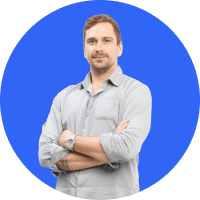In the dynamic realm of software management, where agility and adaptability reign supreme, the significance of reflection and continuous improvement cannot be overstated. Enter retrospective meetings – a pivotal practice that serves as the compass guiding project teams toward greater efficiency, collaboration, and success.
We encounter different challenges and opportunities each day at Saigon Digital. Our guiding principle is simple: making a mistake is not the same as failing; they are precursors of development and change.

The Three Pillars: What Went Well, What Didn't, and How to Improve
In all successful software projects, their heart is found in a desire to learn from their past endeavours. Retrospective meetings allow our team to take a break, look at their travel, and use it in the future. These meetings form part of a culture that promotes growth and innovation, whether they are lighthearted or serious.
What Went Well
It is not the high fives alone that celebrate a win, but more of a strategy. Identifying your successes paves the way for forthcoming victories. Perhaps there was teamwork, a good process, or an ingenious notion. The recognition of these successes sustains a “culture of victory.”
What Didn't Go Well
Facing failures directly will show resilience. Challenges are dissected in a well-structured retrospective meeting. Was there a communication breakdown? A process hiccup? Teams get insights into obstacles and become stronger through frank talks.
How to Improve
What magic works here is asking the question, “How can we do better?”. This forward-thinking view turns challenges into opportunities. Reflecting on this, teams come up with practical measures for improving systems and procedures, communication, and teamwork.
Navigating the Seas of Improvement
An effective retrospective doesn’t need to be complex. Simplify with a focus on open communication and actionable insights. Ask the team to share victories, pinpoint challenges, and collaboratively plan for a better future.
Balancing Act: Fun and Seriousness
While the focus is on improvement, injecting fun fosters a positive atmosphere. Icebreakers, humour, or a light touch can encourage team members to share their thoughts openly. Striking the right balance ensures that retrospectives remain engaging and productive.
Paving the Way Forward
Retrospective meetings aren’t just a checkbox—they're the heartbeat of thriving software projects. By regularly asking what went well, what didn't, and how to improve, teams create a culture of transparency, collaboration, and constant learning.
At Saigon Digital, our journey is all about continuous improvement. While we acknowledge that perfection is a journey, not a destination, we are excited about the prospect of becoming better every day.





